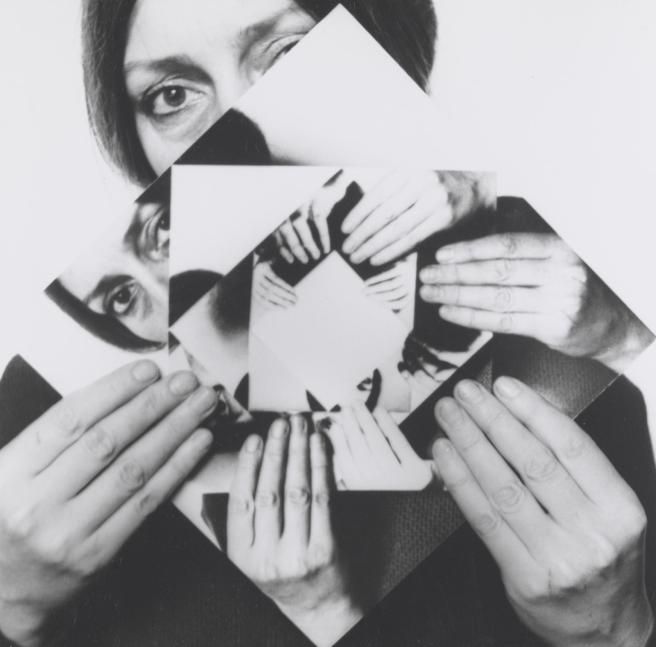One day a while back I happened to buy a black and white photography magazine on a whim. The magazine was the July 2016 volume of Black + White Photography and in it there was an article called: A Modern Eye on some of the work of Dora Maurer. The work on show immediately caught my eye and I have come back to it a few times because it really captured my imagination. Seven Twists I-VI (1979) grasped my attention for the reason that initially it was quite striking to look at because of the optical illusion.

Afterwards I began to appreciate the organic qualities the photographs possessed. By this I meant there were subtle imperfections to the photographs-in-photographs which rendered the illusion as authentic and natural. As well as this these subtle imperfections also had a romantic appeal to them in my opinion – if everything had been lined up absolutely accurately the photographs would have appeared flat and utilitarian.
The illusion itself was a variation on the Droste effect but one that twisted as the photos were taken, printed and then photographed again inside a new self-portrait. I particularly liked the ‘blank canvas’ or photograph as the starting base for the work. I could imagine it would be possible to start using a self-portrait as the initial photograph instead but this approach for me suggested that the work was quite spontaneous and perhaps the illusion wouldn’t have been as strong without the blank photograph.
I decided I would try to incorporate this touch (the blank canvas starting point) which eliminating other touches (like the twisting effect) in my own Droste self-portrait. Because I appreciated the subtle imperfections of Maurer’s work, I wanted to make this a feature of my work. I did this by the inclusion of the remote cord from my hand to the camera as well as alternating the hand holding the canvas in each picture. This kind of attention to detail I was learning could make or break a photograph. Unlike Maurer, I tried to pay close attention to how the photographs-in-photographs ‘lined up’ – both inside each other and with the photographic frame. Like Maurer, I chose the black and white medium to make the illusion stronger and to remove a sense of time to disorient the viewer (as the sense of time was now only from each iteration of the photograph). Lastly I elected to create the Droste effect for the photo-in-photo 3 times as then the illusion was quite apparent but didn’t overwhelm the self-portrait.

Although I wouldn’t strictly put this photograph or set of photographs in the genre of documentary it still included documentary elements, which is why I’ve included it as a post for my documentary course. Documentary elements could include the changing of my appearance from photograph to photograph-in-photograph. It could also raise documentary questions from photograph to photograph-in-photograph like permanence (or impermanence) of the photographic medium and what is true and untrue about this photograph or set of photographs? For example some parts are seemingly consistent from photograph to photograph-in-photograph but at the same time the photographs appear within each other. Also details like the hands alternating from side to side as the photographs become photographs in photographs. Therefore perhaps it proves that photographs are indexical to reality but at the same time can’t always be relied on as documents.

Incidentally I felt my self-portrait worked slightly better cropped in but I have included both the cropped and uncropped versions. The reason I felt it worked slightly better cropped in was that the viewer was able to concentrate on the illusion more and could be less distracted by other parts of the image. Also the alternating hands were more obvious in this version.
References:
Maurer, D. (1979) Seven Twists I-VI. In. A Modern Eye. (2016). Black + White Photography, (191), pp.40-43.
